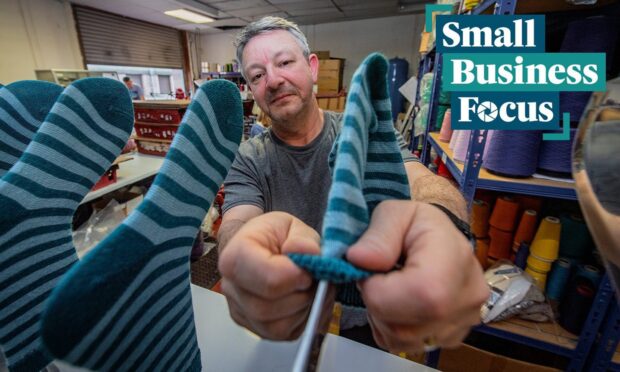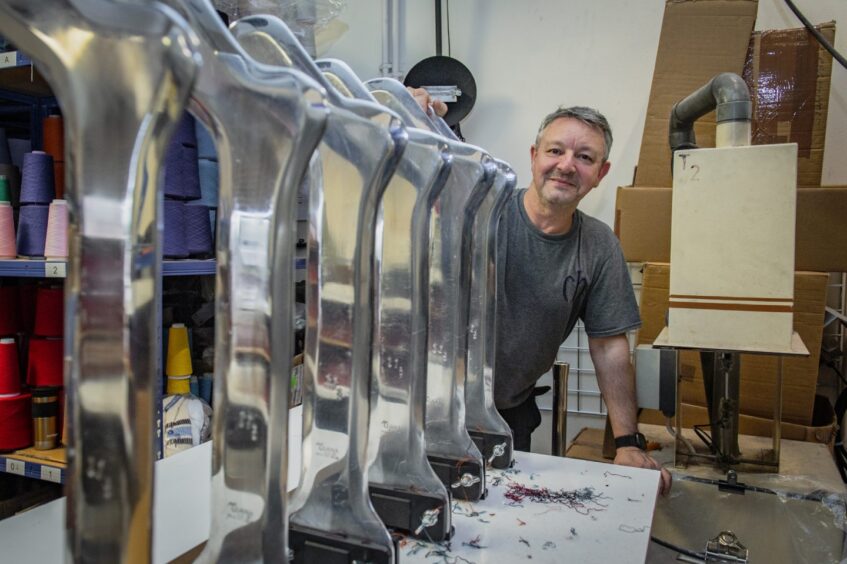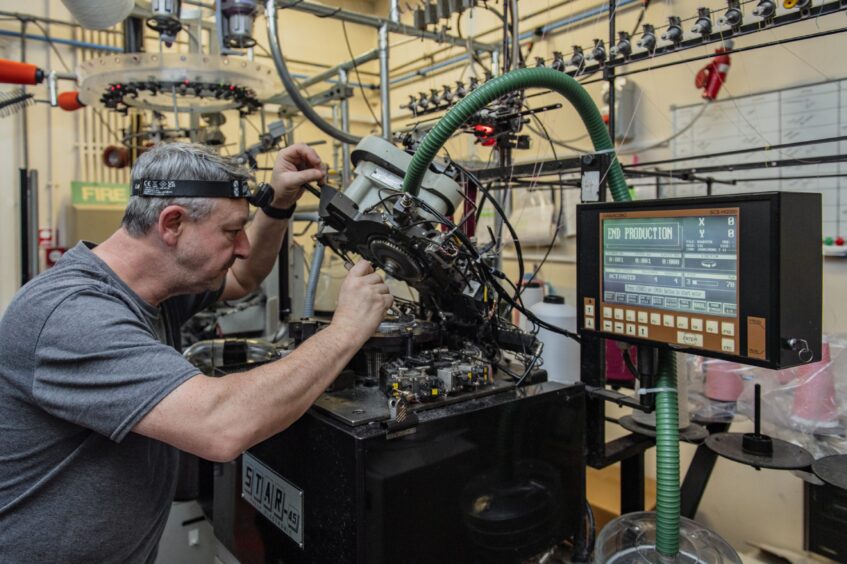When a Forres man was made redundant, he had a long and hard think about what was next in store for him.
And for Steve Elton, everything led back to socks. With the help of his wife Sue, he set up Caledonia Hosiery five years ago.
The sock manufacturer has gone from “humble beginnings” to making 35,000 pairs of socks each year.
Steve answered our questions on the biggest struggles, achievements and more for his Forres business.
How and why did you start in business?
After being made redundant, I thought long and hard about what I was good at and what I enjoyed doing in past employments.
It all led back to socks. So, I convinced my wife to support me in setting up our sock factory.
Being in Scotland, I saw an opportunity to develop a different product offering compared with established sock producers, by using different machinery, knit construction, and yarns.
I also saw the difficulties small brands faced when trying to find suppliers that did not command high volumes, especially being made in north-east Scotland, and I wanted to be that ‘go-to manufacturer’ who could help.
I love working with my customers to bring their ideas, designs, and styles to life.
My philosophy is as our customers’ brand grows, we will grow with them.
How did you get to where you are today?
We began a few months prior to the pandemic, and our capital rapidly dwindled with no orders of any note.
With the world in lockdown, we had no means of procuring yarn or machine parts to make any socks.
When full production resumed, we quickly needed to pivot our business model to try to find customers who wanted bespoke products made in Scotland, rather than make our own brand from the outset.
We started working with small brands to help them test their markets and have grown with all of our current customers as well as having new enquiries on a weekly basis.
From our humble beginnings, five years on, we now produce around 35,000 pairs of socks per year.
Who helped you?
Business Gateway Moray gave lots of support and introductions to other organisations, and Highlands and Islands Enterprise (HIE) part-funded a new sock knitting machine.
The knitting industry is a small community in a vast industry – I’ve had so much help and advice from past colleagues, former employers, and other textile businesses throughout the world.
I can’t ignore the support from close friends and of course family who have been amazing in helping us get to where we are right now.
Finally, without the support, loyalty, and dedication of everyone who works at Caledonia Hosiery, we would probably have found our journey much tougher.
What’s the best piece of advice you’ve ever had?
My Dad introducing me to a private pension scheme at the age of 17.
It seemed crazy at the time, but it was the best advice I could have had. I was once told there’s no such thing as a stupid question and I’ve carried that with me forever.
What is your biggest mistake?
Underestimating the true costs of running our business.
What is your greatest achievement?
Getting the business to a stage where we can employ people.
How are you managing rapidly rising costs, and how could the government help?
Sadly, we did have to increase our prices, which our customers were very supportive of.
A trade agreement with Europe would help with reducing costs and improving cash flow.
Access to cheaper borrowing would allow us to upgrade machinery and employ people, which would make us more efficient.
We’re members of the Federation of Small Businesses (FSB), and we know that they’re always speaking to politicians to improve the environment for businesses like ours.
What do you still hope to achieve?
To upgrade our plant machinery and create more employment for the local area.
What do you do to relax?
Taking our pet Cocker Spaniel for walks along the beaches. We enjoy the odd spa day as our guilty pleasure.
What are you currently reading, listening to or glued to on TV?
I’m reading a John Grisham novel – just binge-watched The Devils Hour on Prime.
And I’m listening to a BBC podcast on football match-fixing.
What do you waste your money on.
We’re very savvy with our money, so don’t think we really waste money – business has taught us this. If anything, perhaps overspending at Christmas time.
What’s the first thing you do when you get up in the morning.
Check my phone for emails and messages. Get my planning hat on for the day’s tasks.
What do you drive and dream of driving.
I drive a 10-year-old Toyota Hybrid – I’m not a petrolhead, so not really fussed.
However, a newer car perhaps.



Conversation